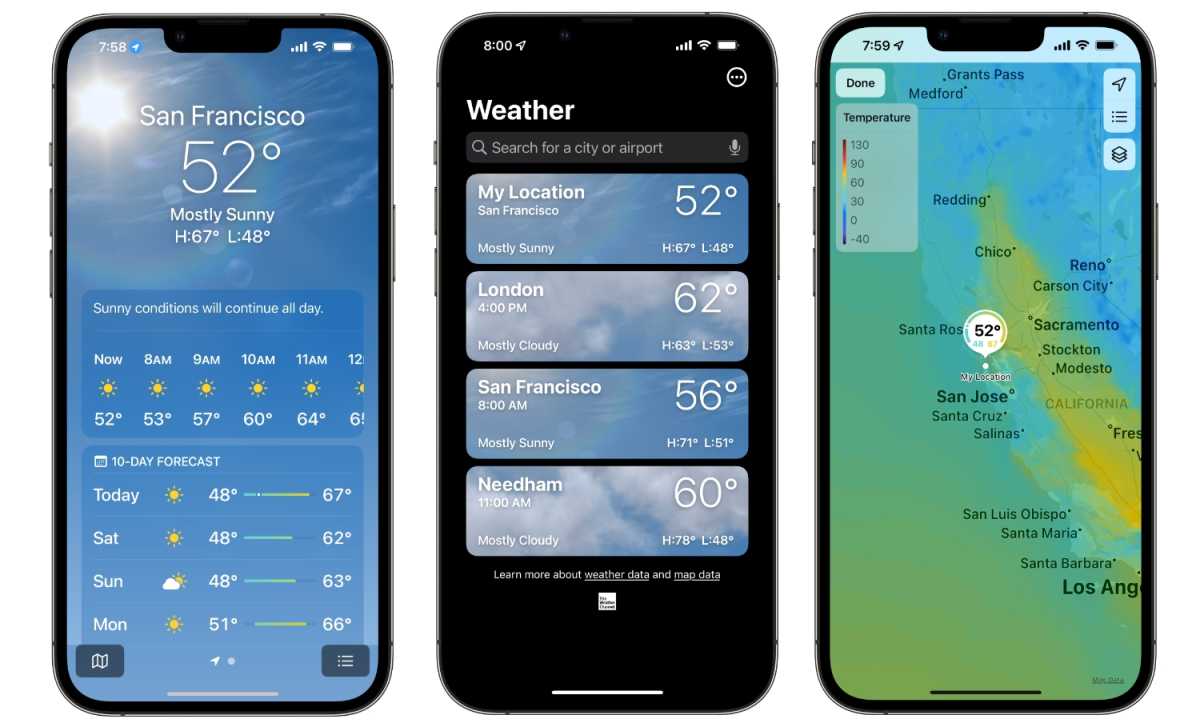
Preparing for Apple’s annual Worldwide Developers Conference is always full of rumors and speculation. But so far, this year’s leaks have been negligible, and most of what has jumped into the public eye is on the vague side. For example, Bloomberg’s normally very popular Mark Gurman said last week that iOS 16 includes some “fresh Apple apps,” although there’s nothing to explain.
Let’s assume that this isn’t just the slang revival of the 1990s, but that the app in question isn’t “funky fresh,” and that the company plans to roll out some new and updated versions. Built-in iOS app. It certainly sounds promising, and as you might imagine, I have some ideas exactly what it can (or should) be with.
weather
It’s about time for Apple. Twelve years later, the iPad deserves a weather app. I know this isn’t the most exciting development, but now you’re already providing the home screen widget with an updated interface that is almost an app in itself. And it’s hard to believe how much money Apple spent on Dark Sky and didn’t take advantage of it on all platforms. (While we’re working on it, some integrations on the macOS side will not fail, especially like menu bar widgets like the Mac.)
It’s time to bring the weather to the iPad.
Apple
The Weather app has always been a tablet-specific absence. Did Apple think that people who use iPad don’t care about the weather because people usually use the device at home? Anyway, the latest version of Weather on the iPhone has shown that the company can compete with the best of the third parties, so let’s finally kick the iPad and bring it to the present day. In time for summer!
wallet
Apple has increasingly entered the payment system over the past few years using Apple Pay and Apple Card. Even a recent minor update to iOS 15.5 has made an interesting change to the wallet app, adding a previously embedded feature in the message, a submit payment button and a request button. However, one aspect of finance, analysis and budgeting tools, is still lacking.
Yes, if you have an Apple Card, you can see a color wash that shows where you’re spending money and where you’re exporting transactions as documents and importing them into other tools. But it would also be useful if the company could provide a more substantive tool for financial soundness and help consumers understand exactly where their money is heading.
Think of your ledger, not your wallet. Apps like Mint and Personal Capital are getting a lot of attention in this area, but if Apple is serious about expanding its spending, and will start accessing TaptoPay within the next few months. It has already been announced that it will be done. Apple may be worth it because it offers a more holistic view that helps consumers manage their money in a responsible way.
Email, phone, message, calendar
The advantage of the apps built into the iPhone is that they can meet the needs of most people. Email? I took it. phone? check. message? yes. calendar? of course. These apps, and in most cases the tasks they perform, are very commonplace. Still, its mediocrity also means that users rely on them to get things done. They are essential. This is a tricky balance because you don’t want to change it because of the change, but sometimes you don’t want it to stagnate until it feels old-fashioned.

The calendar app is scheduled for a major overhaul.
Foundry
Email and calendar are good examples of two apps that have rarely appeared in the last few years, and as a result, are on the verge of ancient times. While third-party email apps have pushed the boundaries with features such as intelligent filtering and snooze reminders (excuse me), Mail is finally adding colorful flags.
Similarly, Calendar, an app that’s almost as minimal as you can find on the platform, has finally added the ability to recognize video calls (two years after the pandemic), but with multiple events. You can stand to revisit how to display the calendar, or improve its natural language processing, or add support for scheduling events across multiple parties.
Finally, one of Apple’s most popular apps, Messages, needs to improve cross-platform compatibility with Android (iOS users, with a ton of messages about people who “like” messages. Includes better spam filtering for unwanted things (rather than attacking), text (via SMS or iMessage), and extended useful tapbacks to include emoji.
These may not be sexy, but they can significantly improve your quality of life for your audience using these built-in apps. This is probably the majority of iOS users, considering that many people don’t bother to switch to a third. Party app.

Commentaires
Enregistrer un commentaire